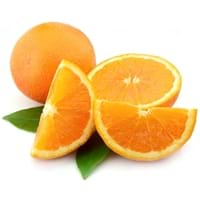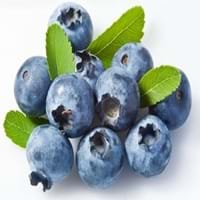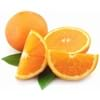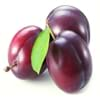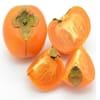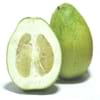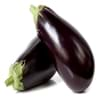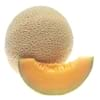Health Benefits
Arthritis treatment, Cancer prevention, Heart care
Cancer prevention, Cures gastro-intestinal troubles, Improves night vision, Improves stomach health, Prevents diabetes, Prevents high blood pressure, Reduces blood circulation problems
General Benefits
Anti-inflammatory properties, Cures cough, Cures fever, Digestive aid, Healing of wounds, Maintains healthy cholesterol level
Fights against infections, Helps in weight loss, Prevents blood clotting in vessels, Treatment of urinary tract infections
Skin Benefits
Anti-aging benefits, Brightens and lightens complexion, Reduces wrinkles, Treatment of dark spots
Anti-aging benefits, Nourishes skin, Protects against skin damage
Hair Benefits
Promotes longer and healthier hair, Protects hair, Rejuvenates scalp, Shiny hair
Prevents hair loss
Allergy Symptoms
Abdominal cramps, Hives, Itching, Nausea, Wheezing
Not Available
Side Effects
Allergic reaction, Skin rash, Possibly unsafe during pregnancy
Decrease in blood sugar levels, Diarrhoea, Dizziness, Headache, Internal bleeding, Stomach pain
Best Time to Eat
As a snack in the late afternoon, Eat the fresh ones, avoid mixing with any other foods, don't eat after meal., Morning time (before lunch), Strictly avoid empty stomach
As a snack in the late afternoon, Don't consume at night and before bed, Eat the fresh ones, avoid mixing with any other foods, don't eat after meal., Morning time (before lunch)
Vitamin B5 (Pantothenic Acid)
Vitamin C (Ascorbic Acid)
Vitamin K (Phyllochinone)
Calories in Fresh Fruit with Peel
Not Available
Calories in Fresh Fruit without Peel
Not Available
Calories in Frozen Form
Not Available
Not Available
Calories in Dried Form
Not Available
Calories in Canned Form
Not Available
Varieties
Clementine, Dancy, King Mandarin, Murcott, Ponkan, Robinson, Satsuma and Sunburst
Dwarf bilberry, Piper, bog blueberry, Northern bilberry, Mountain bilberry and Oval-leaved bilberry
Inside Color
Orange
Light Green
Origin
South-Eastern Asia
Unknown
Grows on
Not Available
Trees
Soil Type
Well-drained
Moist, Well-aerated
Climatic Conditions
Sunny
Cold
Facts about
- It is known by another name ' Mandarin'.
- Oil extracted from its peel is used in various skin and hair care products.
- Tangerines is also known as the ‘Christmas Orange’ because it is used to stuff kids' stockings..
- Bilberries are used in manufacturing of alcoholic drinks.
- They are used to improve aromas of sorbets.
- The green extract of it's leaves is used in textile industry as natural dye.
Spirits
Not Available
Yes
Cocktails
Not Available
Yes
Other Countries
Brazil, Iran, Italy, Japan, Korea, Morocco, Spain, Turkey
Denmark, Finland, Iceland, Sweden
Top Importer
China
United States of America
Botanical Name
Citrus reticulata
Vaccinium myrtillus
Synonym
Citrus clementina or Citrus nobilis
blaeberry, whinberry, European blueberry, whortleberry
Subkingdom
Tracheobionta
Tracheobionta
Division
Magnoliophyta
Magnoliophyta
Class
Magnoliopsida
Magnoliopsida
Subclass
Rosidae
Dillenhidae
Order
Sapindales
Ericales
Family
Rutaceae
Ericaceae
Species
C. reticulata
Vaccinium myrtillus
Generic Group
Citrus fruit
Heath
Difference Between Tangerine and Bilberry
We might think that Tangerine and Bilberry are similar with respect to nutritional value and health benefits. But the nutrient content of both fruits is different. Tangerine and Bilberry Facts such as their taste, shape, color, and size are also distinct. The difference between Tangerine and Bilberry is explained here.
The amount of calories in 100 gm of fresh Tangerine and Bilberry with peel is Not Available and 44.00 kcal and the amount of calories without peel is 53.00 kcal and Not Available respectively. Thus, Tangerine and Bilberry belong to Low Calorie Fruits and Low Calorie Fruits category.These fruits might or might not differ with respect to their scientific classification. The order of Tangerine and Bilberry is Sapindales and Ericales respectively. Tangerine belongs to Rutaceae family and Bilberry belongs to Ericaceae family. Tangerine belongs to Citrus genus of C. reticulata species and Bilberry belongs to Vaccinium genus of Vaccinium myrtillus species. Beings plants, both fruits belong to Plantae Kingdom.
